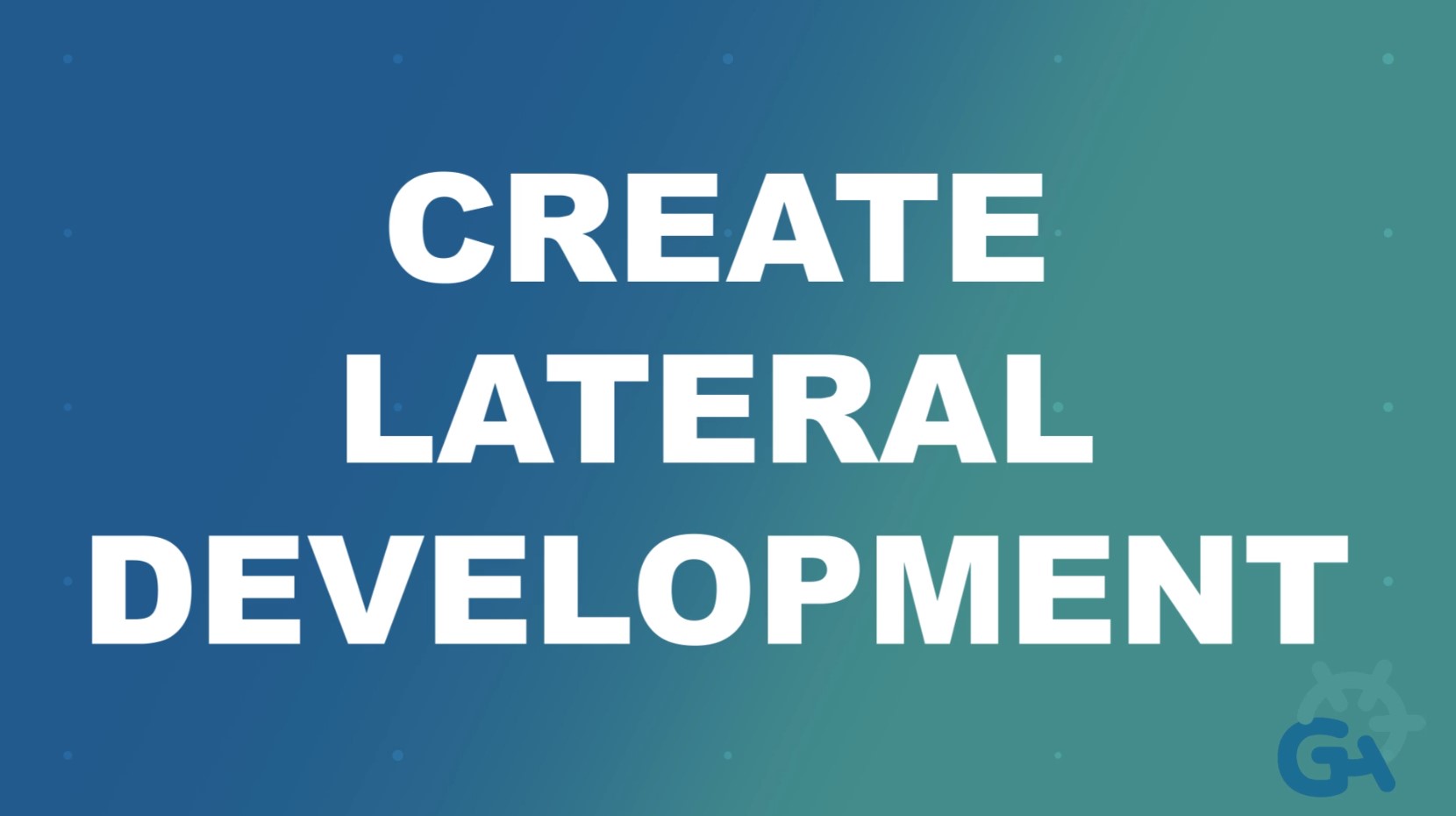
Don’t Be Fooled: Bigger Doesn’t Equal Slower – Letters to Leaders
Dear CEO’s, COO’s, and other runners of complex organizations,
Once upon a time, seven people gathered around a table and decided to do something complicated.
Maybe they were going to invent a new, high-tech medical device. Maybe they wanted to put on a major event covering a topic with a lot of interest but without a formal community. Maybe they wanted to start a nonprofit organization to serve a specific need. Whatever it was, it would be complex, take time, and ultimately require more people, but they were committed. They worked on it every day and checked in with each other weekly. Those meetings lasted anywhere from 20 minutes to a little over an hour, and in them they talked about what was coming up and who needed to do what to stay on track.
Weirdly, the attendees rarely called the gatherings “meetings.”
It was just people working together, in ways that seemed obvious and necessary, like “we have that major milestone/event/filing/news release/etc. in five weeks, and in order to be ready we need to…” The leader helped move meetings along and made rulings occasionally, but everyone was so focused on what they were trying to accomplish that most conversations took care of themselves and drove the group forward. When surprises or problems arose, everyone pitched in and either turned things around or had an honest conversation about tradeoffs, and then acted on their shared plans.
It wasn’t always easy. It wasn’t perfect. It wasn’t free of conflict or a little drama from time to time. But overall, this group of people consistently headed in the same direction and focused on getting there together. And it worked. They succeeded, hit most of their early marks, got some wins. Before they knew it, they had grown to a group of 25 to 50 people with a more complex set of efforts in progress.
[[RELATED: Execution, Accountability, & Alignment: Symptoms to Understand, not Problems to Solve]]
Everybody knows 25 to 50 people can’t fit around a single table to have a meeting, so the original group created some hierarchy. They hired smart people with the right skills, clearly defined overall goals and structure, and created an environment where people felt free to bring their best selves to work. They defined groups, assigned managers, and tried to write clear goals for everyone. In short, they did everything right, at least according to most of what you’d find on LinkedIn as a six-minute read or infographic advocating for the importance of people.
Weirdly, people rarely publish an infographic on LinkedIn advocating against the importance of people.
Anyway, something was different in the leadership team. There were still seven people, gathered around a table, with the same level of competence and commitment to the mission. But many of those people now had teams reporting to them – some with multiple layers. And if you listened to what was being said in the meeting – really listened – it had changed. Gone were the days of “we have a major item coming up, and in order to be ready we need to do X.” In its place appeared something more like this: “my team’s current goals are X, Y, and Z, and here is how that is going.”
This happened almost imperceptibly to those involved. They were still talking about the results they cared about, and of course they now had to roll up the progress of the people beneath them. Surely status updates were needed, and so the transition from issue/decision/solution conversations to status update happened as easily as sliding into a hot tub after a long day.
Before long, though, the leader began to feel a little like that hot tub might be a cauldron slowly coming to a boil. More and more time of the time previously spent doing things or looking forward was now spent interpreting the ever-thickening status updates: Is the presenter putting a positive spin on it? How positive? Is the information accurate? Is it possible the presenter thinks the information is accurate but is mistaken? How will presenter A’s status impact presenter B’s goals? This leader went from looking ahead to the results of the future to looking down at the work happening beneath – it had somehow become the leader’s job to stitch it together.
[[RELATED: Quit Making Sure and Start Making Decisions]]
And it wasn’t just one leader. Members of the leadership team found themselves looking down into their own teams in the same way. Nobody would have said so, but the whole thing had begun to resemble Dr. Seuss’ depiction of management as layers of subordinate-watchers. Much to the frustration of all involved, they began to notice that things were moving more slowly and clumsily but couldn’t put their finger on exactly why.
Weirdly, Dr. Seuss wasn’t trying to be a Management Thought Leader.
Still, if this story sounds familiar, you’re not alone. Many leaders have experienced it. Worse, very little of the advice out there on leadership and running high-functioning organizations has much to say about how to prevent it. On the contrary, most of the advice will either covertly or overtly tell you that as you get bigger, you have no choice but to get slower. Leaders following the majority of “best practices” in organizational development and team leadership often find themselves with this exact problem.
That’s the bad news: it happens so often that people, even “experts,” have come to believe it’s inevitable.
The good news is that it’s the advice that’s slowing you down, not the size of your company. The highest performing entrants in most spaces – even the HUGE ones – don’t allow themselves to tip into endless status-updating with minimal decision-making. They don’t get lost in rosters of linked goals, and they don’t spend all of their organizational improvement calories on Excel spreadsheets with competency matrices. Instead, they run meetings that make high quality decisions, take quick and coordinated action, and then learn from what happens and incorporate the new information into the next round of decisions. What they do is neither mysterious nor terribly difficult to understand: they simply Iterate®.
[[RELATED: Accelerating Decision-Making and Action in Complex Organizations]]
My entire career is about how to prevent or correct this sort of management-bureaucracy-by-way-of-status-update. By doing things like getting everyone looking up, looking forward instead of backward, and implementing Iterative Management® in general, you can get any size organization to flex and pivot just like they would if they were seven people sitting around a table trying to do something new and complicated. If you’re looking for more information on how to do this, either call me or just stick around. I promise, I’ll keep writing about it.
But for now, I just wanted you to remind you not to buy into “bigger equals slower.” If you find someone pushing that advice, don’t find a way to slow down – just find some different advice. Because while it’s true you might need to work a little differently, you can make the changes while you’re getting the work done – you don’t have to trade away results.
I guess what I’m saying is, weirdly, “go slow to go fast” is absolutely correct – but it only works if you don’t forget the second part.
Respectfully,
Ed
PS. If I took your computer, put a bigger microprocessor in it, and then gave it back to you and said, “now your system is run by a larger and more complex network, so of course it will go slower,” you would fire me as your IT person. Adding computing power should add speed, not reduce it; that’s true in human systems too.
Like this and want more? Watch Ed Muzio’s new TV Series, “One Small Step” on C-Suite Network TV. And, Visit the Group Harmonics Industry Intelligence Archive for ideas, whitepapers, and case studies about changing culture and how management culture impacts so many facets of the organization.
- Meet for a Reason (C-Suite TV) - April 29, 2024
- Don’t Be Fooled: Bigger Doesn’t Equal Slower – Letters to Leaders - April 15, 2024
- Create Lateral Development (C-Suite TV) - February 28, 2024







